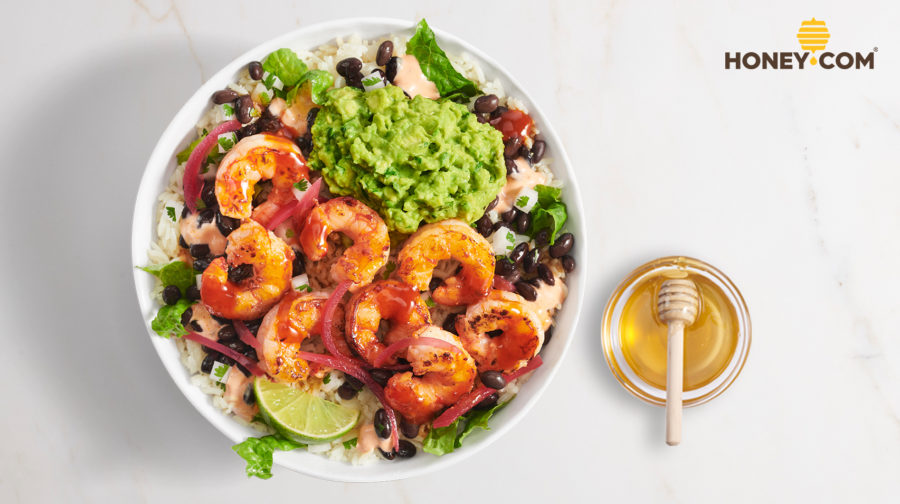Want to eat better? Start by Eating the Rainbow
We would like to introduce our guest blogger, Anne Danahy. Anne Danahy, MS RDN is a registered dietitian, integrative nutritionist and freelance nutrition writer who specializes in women’s health, disease prevention, and healthy aging. She believes living well begins with eating well. Anne works with individuals and groups, as well as brands, food commodities, and the media to inspire her audience to eat better, age gracefully and live vibrantly.
Enjoy her blog on Eating the Rainbow.
One of the easiest and tastiest things you can do for your health is to “eat the rainbow” every day. In other words, try to fill every plate, bowl, or glass with lots of color from a variety of fruits and vegetables. Not only are they packed with vitamins, minerals, and fiber, which help your body and digestive system work better, but also, their bright colors come from important health-promoting compounds known as phytonutrients.
Phytonutrients (Phyto means plant) are in all fruits and vegetables, as well as other plant foods like herbs, whole grains, nuts, seeds, and beans or legumes. They’re different types of chemical compounds naturally present in plants. Their job is to help plants grow and thrive by protecting them from pests and diseases.
Over 5,000 of these phytonutrients have been identified, and scientists are just beginning to understand how they might also help people, by protecting us from diseases. (1)
Many of the compounds in plants function as antioxidants. (2) They work to block the action of unstable compounds known as free radicals, which are formed by exposure to things like environmental toxins, sunlight, and cigarette smoke. Over time, free radicals can damage cells in your body, so antioxidants may help to protect your cells from damage.
Other phytonutrients have anti-inflammatory properties. In lab tests, they help block pathways in the body that promote inflammation, which can be a trigger for many chronic age-related and autoimmune diseases.(3)
Finally, some phytonutrients have antimicrobial properties. While not as potent as taking an antibiotic, lab studies show certain plant compounds can inhibit the growth of some strains of pathogenic bacteria. (2)
Because people eat lots of different foods, it’s impossible to prove an effect from any one food or phytonutrient. However, large population studies do link diets higher in fruits and vegetables with a lower risk of cancer and heart disease, as well as some other chronic and age-related diseases. (1,4,5)
Most nutrition experts agree that eating a wide variety of colorful plants each day can help keep you healthier. In addition, research published in the British Medical Journal also shows that people who eat more fruits and vegetables tend to live longer.(5) If one of your goals this year is to improve your diet and your health, eating the rainbow is a great place to start.
Which colors are best for you?
The simple answer is – all of them. All fruits and vegetables have their own unique set of nutrients and health-promoting compounds. Here are some of our favorites:
Deep red, blue, and purple: Raspberries, black or blueberries, purple potatoes, and eggplant all get their color from antioxidant compounds called anthocyanins. They help to delay cellular aging and keep your blood vessels healthier, so eating this color is linked with a lower risk of heart disease. (6,7)
Bright red and pink: Tomatoes, red sweet peppers, watermelon, and pink or red grapefruit are all excellent sources of lycopene, a carotene-compound that’s been studied for its effects on cancer. (2, 4, 6)
Orange and yellow: Foods like carrots, sweet potatoes, winter squash, cantaloupe, mango, peaches, and nectarines are packed with beta-carotene. It’s great for your eyes, skin, and overall immune system. (2,8)
Green: Leafy and green vegetables like cabbage, kale, arugula, and broccoli have several compounds that may help reduce your risk of cancer. (9) In addition, those leafy greens are great sources of fiber and antioxidants, for only about 25 calories per cup.
White and brown: Although they’re the least colorful, onions, garlic, leeks, jicama, cauliflower, mushrooms, and even white potatoes still have lots of benefits. Most provide prebiotic fiber, which helps to feed the healthy bacteria in your gut. Others, like cauliflower and mushrooms, have cancer-fighting properties, and they all have their share of vitamins and minerals.
How to Get Them All In
It can be a bit of a challenge to get the five to nine servings most health experts recommend each day, but it’s OK to start slow. Try these tips to incorporate more fruits and vegetables:
- Try a fruit and greens smoothie for breakfast or a snack. Choose mild-tasting greens like baby spinach or kale, and you’ll never know they’re there!
- Make a snack platter for lunch or an afternoon snack that includes a variety of raw vegetables along with a roasted red pepper and sundried tomato bean dip.
- Roast up a large sheet pan full of vegetables like sweet potatoes, cauliflower, carrots, Brussels sprouts, and anything else you like. Use the leftovers to make a vegetable frittata for tomorrow’s breakfast.
- Make a pot of vegetable soup or a vegetable-packed stew every week.
- If you like something sweet after a meal, make desserts fruit-forward. Use any seasonal fruit for baking a fruit crumble or cobbler.
- Take advantage of short cuts like precut or spiral cut vegetables, and frozen fruits and vegetables. As long as they don’t have anything added, they’re just as good for you as fresh.
Try to eat a half plate, bowl, or cup of fruits and vegetables with every meal and snack, but don’t stress if you miss a few servings occasionally. Do your best to make a colorful plate a habit and remember that some fruits and vegetables each day are always better than none.
References:
- Liu RH. Dietary bioactive compounds and their health implications. Journal of food science. 2013 Jun;78(s1):A18-25. https://onlinelibrary.wiley.com/doi/full/10.1111/1750-3841.12101
- Altemimi A, Lakhssassi N, Baharlouei A, Watson DG, Lightfoot DA. Phytochemicals: Extraction, isolation, and identification of bioactive compounds from plant extracts. Plants. 2017 Dec;6(4):42 https://www.ncbi.nlm.nih.gov/pmc/articles/PMC5750618/
- Zhu F, Du B, Xu B. Anti-inflammatory effects of phytochemicals from fruits, vegetables, and food legumes: A review. Critical reviews in food science and nutrition. 2018 May 24;58(8):1260-70. https://pubmed.ncbi.nlm.nih.gov/28605204-anti-inflammatory-effects-of-phytochemicals-from-fruits-vegetables-and-food-legumes-a-review/
- Adefegha SA. Functional foods and nutraceuticals as dietary intervention in chronic diseases; novel perspectives for health promotion and disease prevention. Journal of dietary supplements. 2018 Nov 2;15(6):977-1009. https://pubmed.ncbi.nlm.nih.gov/29281341-functional-foods-and-nutraceuticals-as-dietary-intervention-in-chronic-diseases-novel-perspectives-for-health-promotion-and-disease-prevention/
- Fruit and vegetable consumption and mortality from all causes, cardiovascular disease, and cancer: systematic review and dose-response meta-analysis of prospective cohort studies https://www.ncbi.nlm.nih.gov/pmc/articles/PMC4115152/
- Phytonutrients: Paint your plate with the colors of the rainbow https://www.health.harvard.edu/blog/phytonutrients-paint-your-plate-with-the-colors-of-the-rainbow-2019042516501
- Cassidy A, Bertoia M, Chiuve S, Flint A, Forman J, Rimm EB. Habitual intake of anthocyanins and flavanones and risk of cardiovascular disease in men. The American journal of clinical nutrition. 2016 Sep 1;104(3):587-94. https://www.ncbi.nlm.nih.gov/pmc/articles/PMC4997299/
- Kim JK. An update on the potential health benefits of carotenes. EXCLI J. 2016;15:1–4. Published 2016 Jan 6. doi:10.17179/excli2015-664 https://www.ncbi.nlm.nih.gov/pmc/articles/PMC4817424/
- AICR’s foods that fight cancer: Broccoli and cruciferous vegetables. American Institute for Cancer Research. https://www.aicr.org/foods-that-fight-cancer/broccoli-cruciferous.html. Accessed January 22, 2020.






